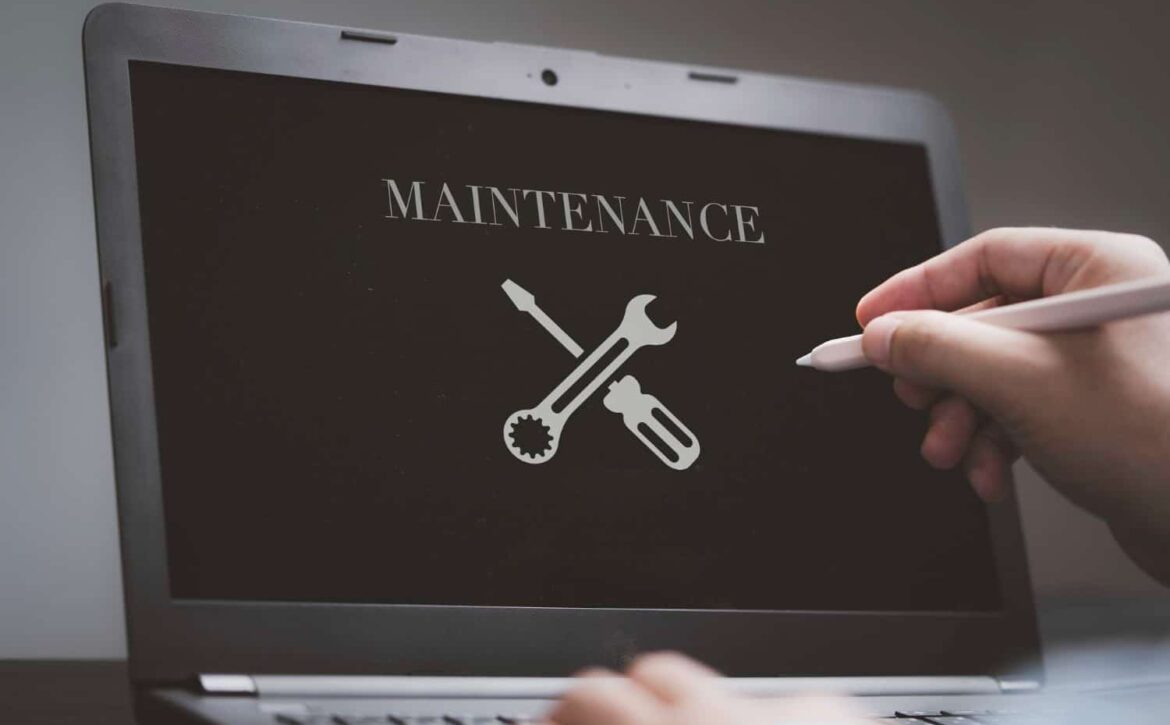Why Site Maintenance Matters
In today’s digital landscape, where websites are the primary gateway to businesses, organizations, and individuals, site maintenance has become essential to online success. Regularly maintaining and updating your website goes beyond aesthetics—it is crucial in ensuring optimal performance, security, user experience, and search engine visibility. From enhancing site speed and usability to addressing security vulnerabilities and maintaining up-to-date content, site maintenance is the key to a polished and high-performing online presence. In this blog, we delve into why site maintenance matters and how it can positively impact your website’s success.
Enhancing Performance
The Impact of Site Speed on User Engagement and Conversions
Website speed is a critical factor influencing user experience. Numerous studies have shown that a slow-loading website can significantly impact user engagement, with potential visitors abandoning a page if it takes longer than a few seconds to load. The implications of poor site speed extend beyond user frustration, as it directly affects conversion rates. Research indicates that even a one-second delay in page load time can significantly drop conversions. A sluggish website can be a deal-breaker for potential customers in a highly competitive digital landscape.
Regular Updates and Optimization Techniques for Improved Performance
- Content Delivery Network (CDN): Implementing a CDN allows for distributing website content across multiple servers worldwide, reducing latency and improving user page load times across different geographical locations.
- Caching: Utilizing caching mechanisms, such as browser caching and server-side caching, can store static elements of a website locally, enabling faster access to content and reducing server load.
- Image optimization: Compressing and resizing images without compromising quality can significantly impact page load times. Tools and plugins are available to automate image optimization processes.
- Minification and Gzip compression: Minifying HTML, CSS, and JavaScript files removes unnecessary characters and reduces file sizes, while Gzip compression further compresses these files for faster transmission.
- Database optimization: Regularly optimizing and cleaning up databases can improve website performance by reducing the time it takes to retrieve and process data.
- Updates and patches: Keeping your website’s software, plugins, and themes up to date is crucial for performance. Developers often release updates that address bugs, security vulnerabilities, and performance enhancements.
- Performance monitoring: Regularly monitoring website performance using tools like Google PageSpeed Insights or GTmetrix can provide insights into areas that need improvement and allow for timely optimization.
Ensuring Security
The Prevalence of Cyber Threats and Website Vulnerabilities
The internet is teeming with malicious actors seeking to exploit website vulnerabilities for their gain. The range of cyber threats is vast, from data breaches and identity theft to malware injections and distributed denial-of-service (DDoS) attacks. Websites of all sizes, including small businesses and individuals, are potential targets. Understanding the landscape and acknowledging the prevalence of cyber threats is the first step in safeguarding your website and data.
Importance of Staying Up-To-Date with Security Patches and Updates
Software vulnerabilities are often discovered and disclosed by security researchers or malicious actors. Once identified, developers release security patches and updates to address these vulnerabilities. Failing to apply these patches promptly leaves your website exposed to potential attacks. Staying vigilant and keeping your website’s software, plugins, themes, and content management systems up to date is crucial in maintaining a secure online presence.
Implementing Robust Security Measures and Regular Audits
- Strong passwords and user authentication: Encourage using complex passwords and two-factor authentication (2FA) to prevent unauthorized access to your website.
- Secure hosting and SSL encryption: Choose a reputable hosting provider with robust security measures, including regular backups, intrusion detection systems, and secure socket layer (SSL) encryption.
- Web application firewalls (WAF): Implementing a WAF adds a layer of security by filtering out malicious traffic and blocking potential threats.
- Regular security audits: Conduct routine security audits to identify vulnerabilities, assess the effectiveness of existing security measures, and ensure compliance with best practices.
- Malware scanning and removal: Utilize security plugins or services that scan your website for malware, suspicious files, and other security risks and promptly remove any detected threats.
- Employee awareness and training: Educate your team about security best practices, such as recognizing phishing attempts, using secure networks, and being cautious with user access and privileges.

Improving User Experience
The Relationship Between User Experience and Website Success
User experience is the sum of a user’s interactions, perceptions, and emotions while interacting with a website. A positive user experience directly impacts website success, including increased engagement, improved conversion rates, higher customer satisfaction, and enhanced brand reputation. In contrast, a poor user experience can lead to high bounce rates, low user retention, and negative feedback. Recognizing the significance of UX is crucial for website owners aiming to build a thriving online presence.
Role of Site Maintenance in Enhancing Usability and Accessibility
- Streamlined navigation and intuitive design: Regular site maintenance ensures that navigation menus, buttons, and overall design elements remain intuitive and user-friendly. This allows visitors to effortlessly explore your website, find information, and take desired actions.
- Responsive and mobile-friendly design: With the increasing use of mobile devices, ensuring your website is responsive and optimized for different screen sizes is essential. Regular maintenance helps identify and resolve responsiveness issues, ensuring a seamless device experience.
- Accessibility compliance: Site maintenance ensures accessibility compliance to cater to users with disabilities. This includes implementing features like alternative text for images, keyboard navigation support, and sufficient color contrast for visually impaired users.
- Optimized page load times: Regular maintenance helps identify and rectify issues contributing to slow page load times, such as large image files, excessive plugins, or inefficient code. Faster load times enhance the user experience by reducing waiting time and improving website performance.
Monitoring and Fixing Broken Links, Outdated Content, and Other Issues
- Broken links: Regularly monitoring and fixing broken links is crucial for a positive user experience. Broken links frustrate users and lead to a sense of unprofessionalism. Tools and plugins are available to help identify and fix broken links efficiently.
- Outdated content: Site maintenance involves regularly reviewing and updating content to ensure its relevance and accuracy. Outdated content can mislead users and negatively impact their experience. Regular content audits help maintain a fresh and engaging website.
- Other UX-related issues: Maintenance also includes addressing other UX-related issues such as formatting errors, inconsistent branding, poor readability, or confusing user flows. Proactively identifying and resolving these issues creates a more enjoyable and user-centric experience.
Search Engine Optimization (SEO) Benefits
How Site Maintenance Contributes to Better Search Engine Rankings
- Improved website performance: Site maintenance, including regular updates and optimization techniques, improves website speed, user experience, and overall performance. Search engines favor fast-loading and user-friendly websites, resulting in higher rankings.
- Up-to-date content: Regularly updating and adding fresh, relevant content through site maintenance signals search engines that your website is active and provides value to users. This increases the chances of search engines crawling and indexing your website more frequently.
- Security and trustworthiness: Websites with robust security measures, implemented through site maintenance, gain trust from search engines. Trustworthy websites are more likely to rank higher as search engines prioritize user safety.

Importance of Monitoring and Optimizing Website Structure, Metadata, and Keywords
- Website structure: Proper website structure allows search engines to understand the organization and hierarchy of your content. Regularly monitoring and optimizing website structure ensures clear navigation, logical URLs, and easy indexing, positively impacting search engine rankings.
- Metadata optimization: Optimizing title tags, meta descriptions, and header tags through site maintenance helps search engines understand the relevance of your content. Targeted and keyword-rich metadata can improve your website’s visibility in search results.
- Keyword research and optimization: Site maintenance involves ongoing keyword research to identify relevant and high-performing keywords for your target audience. Incorporating these keywords strategically within your content, headings, and metadata enhances your website’s visibility in search engine results.
Link Maintenance and the Impact on SEO Performance
- Internal linking: Site maintenance includes ensuring a strong internal linking structure. Proper internal linking helps search engines discover and navigate your website, improving indexation and overall SEO performance.
- External linking: Regular link maintenance involves monitoring and updating external links on your website. External links should be fixed for your website to maintain user experience and maintain user experience and maintain your website’s credibility. Maintaining a healthy and relevant external link profile enhances your SEO performance.
- Backlink analysis: Site maintenance involves monitoring and analyzing your backlink profile to identify and disavow low-quality or spammy links. Maintaining a high-quality backlink profile improves your website’s authority and visibility in search engine rankings.
Mitigating Downtime and Technical Issues
The Costs and Consequences of Website Downtime
- Revenue loss: Every minute of website downtime translates to potential lost revenue, especially for e-commerce businesses heavily reliant on online sales. Downtime disrupts transactions, prevents customers from accessing products or services, and erodes consumer trust.
- Reputation damage: Website downtime can tarnish your brand’s reputation, leading to negative customer experiences and reduced trust. Users may perceive your website as unreliable or unprofessional, impacting customer loyalty and acquisition.
- SEO impact: Search engines penalize websites experiencing frequent or extended downtime, leading to lower search rankings and decreased organic traffic.
- Customer frustration and churn: Users have high expectations for website availability and performance. If they encounter frequent downtime, they will likely abandon your website and seek alternatives, resulting in customer churn.
Regular Backups, Testing, and Monitoring to Prevent and Address Technical Issues
- Regular backups: Site maintenance involves implementing regular backups of your website and its data. Backups ensure that you can quickly restore your website to a previous functional state in case of technical issues or data loss.
- Testing and quality assurance: Proactive maintenance includes regularly testing your website’s functionality, usability, and performance. This helps identify and address potential technical issues before they impact users.
- Continuous monitoring: Monitoring tools and services enable real-time detection of potential technical issues, performance bottlenecks, or security threats. By proactively monitoring your website, you can address issues promptly and minimize downtime.
Implementing Disaster Recovery Plans and the Role of Maintenance in Minimizing Downtime
- Disaster recovery plans: Maintenance involves implementing comprehensive disaster recovery plans to mitigate the impact of potential downtime. These plans outline step-by-step procedures to recover your website and its data during an outage, ensuring business continuity.
- Redundancy and failover systems: Implementing redundant systems and failover mechanisms, such as backup servers and load balancers, reduces the risk of downtime. Maintenance includes regularly testing and optimizing these systems to ensure their effectiveness.
- Rapid response and issue resolution: By conducting regular maintenance activities, you can identify and resolve potential technical issues or vulnerabilities promptly. This proactive approach minimizes the likelihood of downtime and ensures a swift response in case of an incident.
Site maintenance is a critical aspect of managing a successful website. It ensures optimal performance, enhances security, improves user experience, boosts search engine rankings, and mitigates downtime and technical issues. Neglecting site maintenance can result in poor website performance, compromised security, frustrated users, and missed business opportunities. To reap the benefits of a well-maintained website, it’s essential to prioritize regular updates, optimization, security measures, and monitoring. Contact us today at 760-383-3591 to learn more about how our maintenance services can help your website thrive and succeed in the digital landscape.




